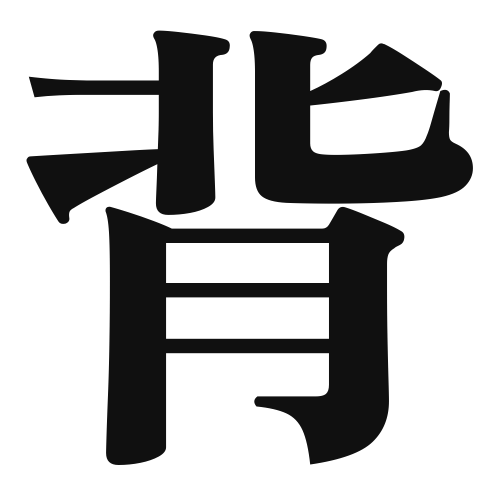1. Overview of Meaning
The kanji “背” (pronounced “se” or “hai”) primarily means “back” or “height.” It can refer to the physical back of a person or object, as well as metaphorically to concepts like “backing” or “support.” In some contexts, it can also indicate age or stature.
2. Formation and Radical
Formation of the Kanji: The kanji “背” is a phono-semantic compound (形声文字), which means it combines a phonetic component with a semantic component. The left part “背” suggests the meaning related to the back, while the right part indicates the pronunciation.
Radical: The radical for “背” is “背” itself, which is often associated with meanings related to the back or height.
3. Examples of Usage
Common Words and Phrases: Some frequently used words that include “背” are:
- 背中 (せなか, senaka) – back
- 背丈 (せたけ, setake) – height (of a person)
- 背負う (せおう, seou) – to carry on one’s back
Example Sentences in Daily Conversation:
- 彼は背が高いです。(かれはせがたかいです。) – He is tall.
- 背中が痛いです。(せなかがいたいです。) – My back hurts.
4. Synonyms and Antonyms
Similar Kanji: A similar kanji is “後” (ご, go), which means “behind” or “after.” While both relate to the concept of “back,” “背” specifically refers to the physical back or height, whereas “後” refers more to position in time or space.
Antonyms: An antonym for “背” could be “前” (まえ, mae), which means “front” or “before,” indicating the opposite direction or position.
5. Cultural and Historical Background
Relation to Japanese Culture: The concept of “背” is significant in Japanese culture, often associated with respect for elders and the importance of supporting one another, as seen in family structures.
Proverbs and Idioms: One common saying is “背中を押す” (せなかをおす, senaka o osu), which means “to push someone from behind,” symbolizing encouragement or support in pursuing goals.
